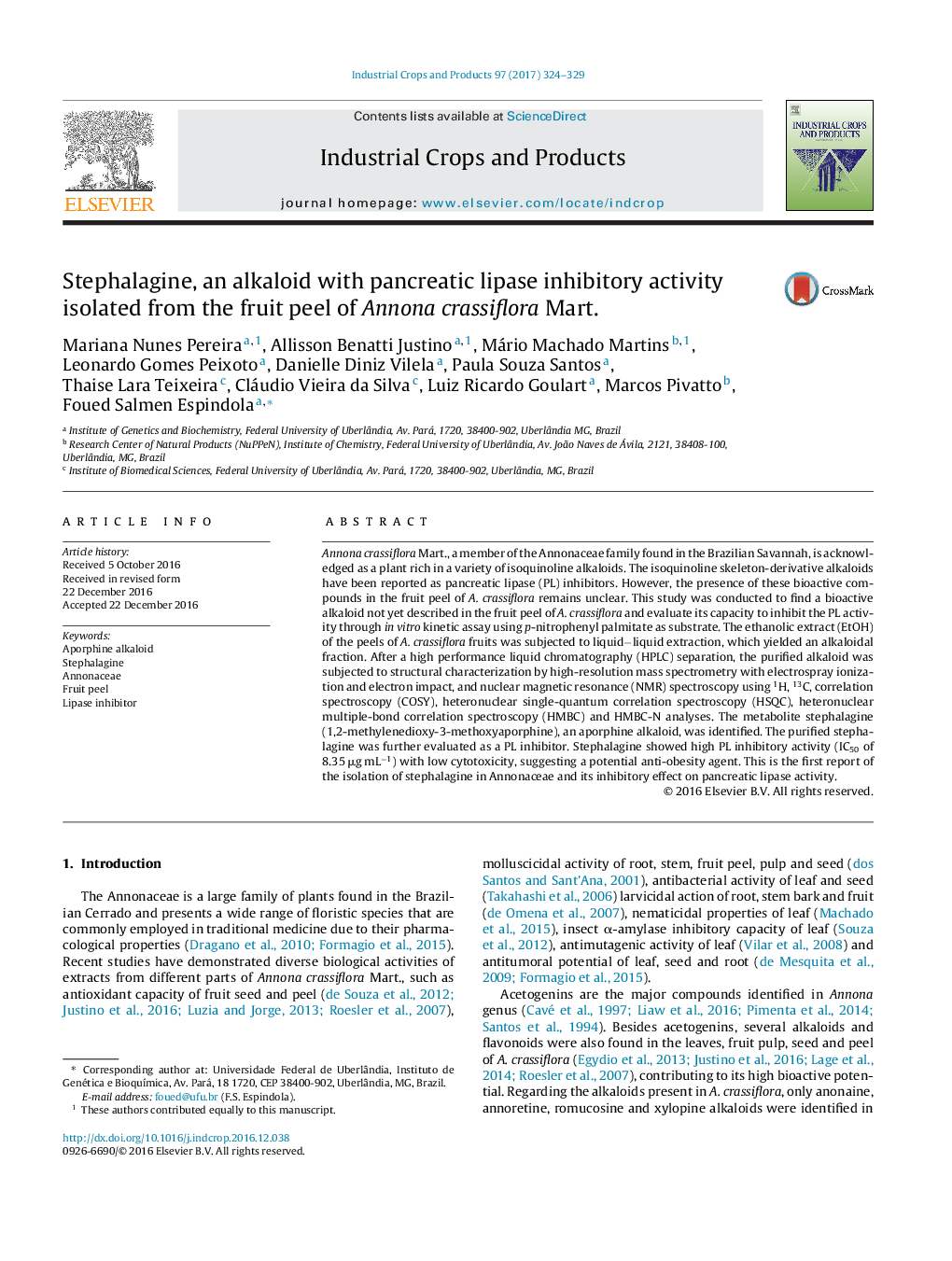| Article ID | Journal | Published Year | Pages | File Type |
|---|---|---|---|---|
| 5762238 | Industrial Crops and Products | 2017 | 6 Pages |
Abstract
Annona crassiflora Mart., a member of the Annonaceae family found in the Brazilian Savannah, is acknowledged as a plant rich in a variety of isoquinoline alkaloids. The isoquinoline skeleton-derivative alkaloids have been reported as pancreatic lipase (PL) inhibitors. However, the presence of these bioactive compounds in the fruit peel of A. crassiflora remains unclear. This study was conducted to find a bioactive alkaloid not yet described in the fruit peel of A. crassiflora and evaluate its capacity to inhibit the PL activity through in vitro kinetic assay using p-nitrophenyl palmitate as substrate. The ethanolic extract (EtOH) of the peels of A. crassiflora fruits was subjected to liquidâliquid extraction, which yielded an alkaloidal fraction. After a high performance liquid chromatography (HPLC) separation, the purified alkaloid was subjected to structural characterization by high-resolution mass spectrometry with electrospray ionization and electron impact, and nuclear magnetic resonance (NMR) spectroscopy using 1H, 13C, correlation spectroscopy (COSY), heteronuclear single-quantum correlation spectroscopy (HSQC), heteronuclear multiple-bond correlation spectroscopy (HMBC) and HMBC-N analyses. The metabolite stephalagine (1,2-methylenedioxy-3-methoxyaporphine), an aporphine alkaloid, was identified. The purified stephalagine was further evaluated as a PL inhibitor. Stephalagine showed high PL inhibitory activity (IC50 of 8.35 μg mLâ1) with low cytotoxicity, suggesting a potential anti-obesity agent. This is the first report of the isolation of stephalagine in Annonaceae and its inhibitory effect on pancreatic lipase activity.
Related Topics
Life Sciences
Agricultural and Biological Sciences
Agronomy and Crop Science
Authors
Mariana Nunes Pereira, Allisson Benatti Justino, Mário Machado Martins, Leonardo Gomes Peixoto, Danielle Diniz Vilela, Paula Souza Santos, Thaise Lara Teixeira, Cláudio Vieira da Silva, Luiz Ricardo Goulart, Marcos Pivatto, Foued Salmen Espindola,
